
Lima, Peru is a city that has a lot to offer but doesn’t always make a good first impression due to the cloak of chilly fog it wears for months of the year. Not to mention the press of nine million residents in the capital city. However, it is rich in history and there is much to see. If it’s your first visit, it’s a place to begin appreciating the bredth and depth of Peru’s multifaceted culture, ranging from the pre-Columbian era to the Inca Empire, Spanish conquistadors and, finally, independence and the modern world. Three days in Lima is like traveling back in time.
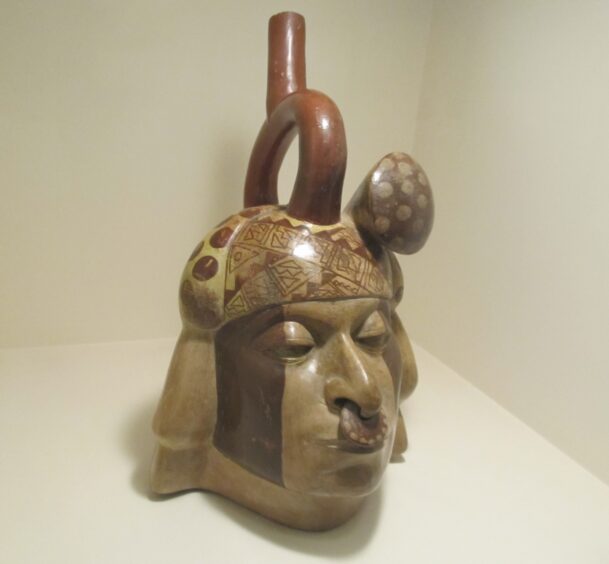
Visitors may not be aware that Peru is one of the six cradles of civilization in the world, each of which developed independently from other civilizations, including better known sites like Egypt and the Indus Valley. The pre-Columbian period began around 6,000 BCE along the coast of Peru, while the Incas later dominated the inhabitants of the Andes mountains before the Spanish conquerors arrived.
My interests in history, culture and archeology drew me to an excellent museum and the wonder of an archeological site right in the middle of Lima—no long bus ride needed to see a dig in action. In just one to two days, you can experience the best of Lima and get an overview of the different regions of Peru. I’ve listed what I consider the essential sights of central Lima on Day 1, in case you only have a day. Day 2 will shed more light on ancient cultures and fun tourist activities in Miraflores. Day 3 allows time to enjoy the more whimsical side of Lima in Barranco.
My favorite things to see in downtown Lima are Plaza Mayor, the Catacombs, and Plaza San Martin. Lima was established by the Spanish conquistador, Francisco Pizzaro in 1535. This area was technically part of the Inca Empire, but distant from the Inca capital in Cusco.
If you are visiting Lima for the first time, odds are that you will be heading to Cusco and Machu Picchu, where you will see ancient Inca cities that date from the 12th century. If you are lucky enough to head north to Chiclayo or Trujillo, you’ll see evidence of large, well-developed pre-Columbian settlements that started before the Common Era or soon after. To travel through Peru is to travel back in time, measured in centuries.
To get around, take the bus, Uber, or a taxi arranged by your hotel to Plaza Mayor. After taking in all the sites there, take a taxi to the Larco Museum. Lunch can either be downtown or the charming restaurant at the Larco Museum.
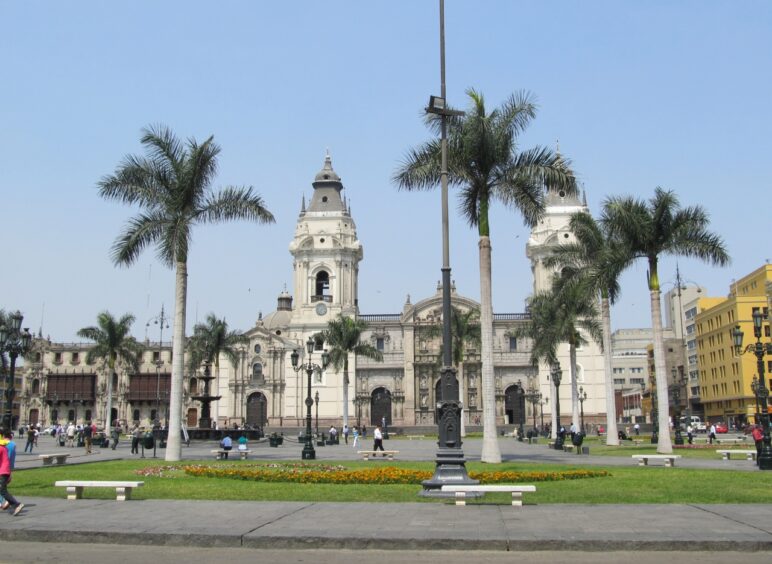
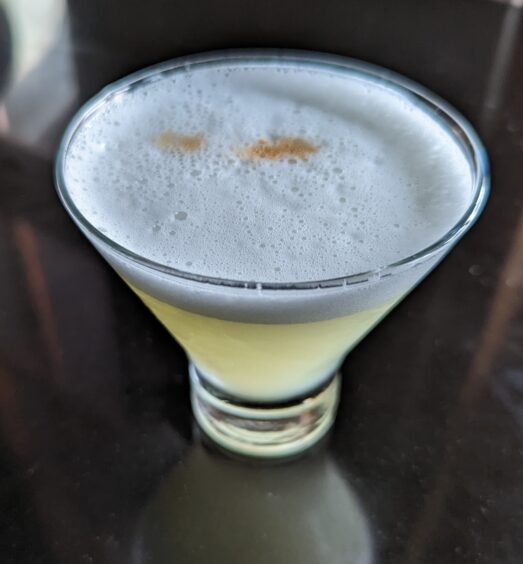
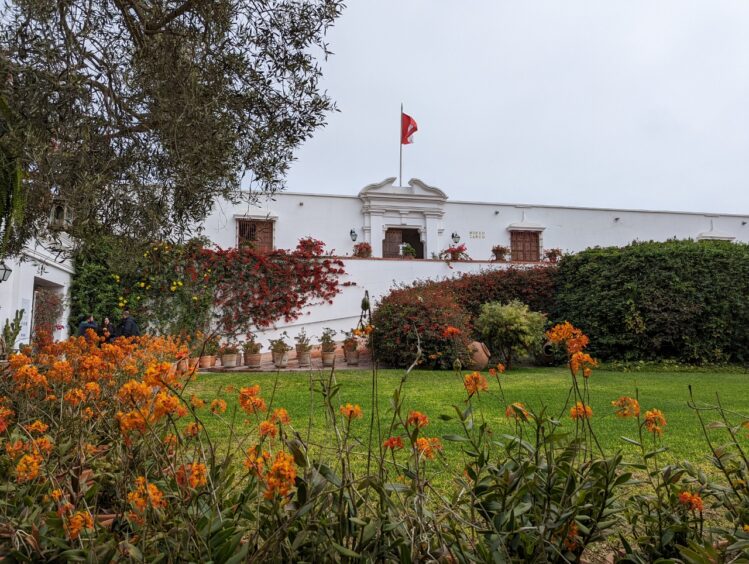

I always stay in the Miraflores district because it’s a pleasant neighborhood where it feels comfortable to stroll at night and is loaded with restaurants and hotels.
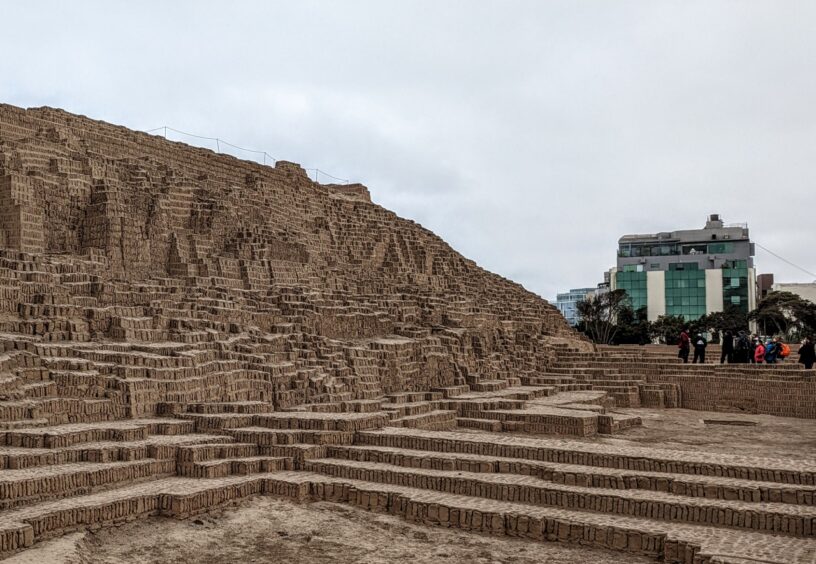
I have no idea why it took four visits to Miraflores for me to learn about Huaca Pucllana, a pre-Inca archeological site dating from AD 500, right in the middle of the district. It’s fascinating to see an active archaeological dig anywhere, but especially in the middle of a city. Like the Larco Museum, they have a wonderful restaurant overlooking the site. I highly recommend the Huaca Pucllana tour, followed by lunch, leaving the afternoon to explore Miraflores.
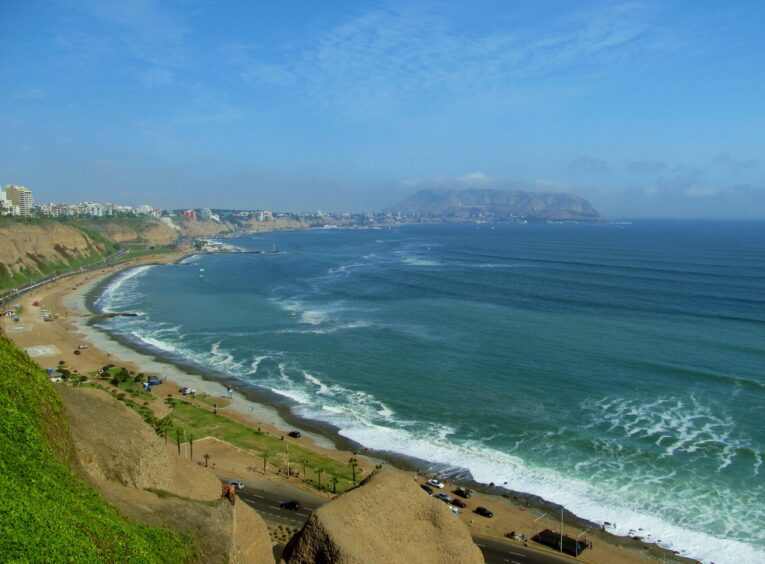
There’s a lot to explore in Miraflores, from parks to beaches and plenty of shopping. We always find intriguing restaurants tucked away on side streets and you can find lodging at all price points, from hostels to luxury hotels. We usually stay on Avenue Jose Larco near the ocean. It’s a nice walk north to Kennedy Park/Parque Kennedy, which is loaded with cats, and Seventh of June Park (Parque 7 de Junio) using the Av 28 de Julio diagonal street. At the south (ocean) end is Salazar Park/Parque Salaza, anchored by the high-end Larcomar shopping center, with panoramic views over the cliffs to the Pacific Ocean. To find these on Google Maps, search for directions between Larcomar and Parque Kennedy.
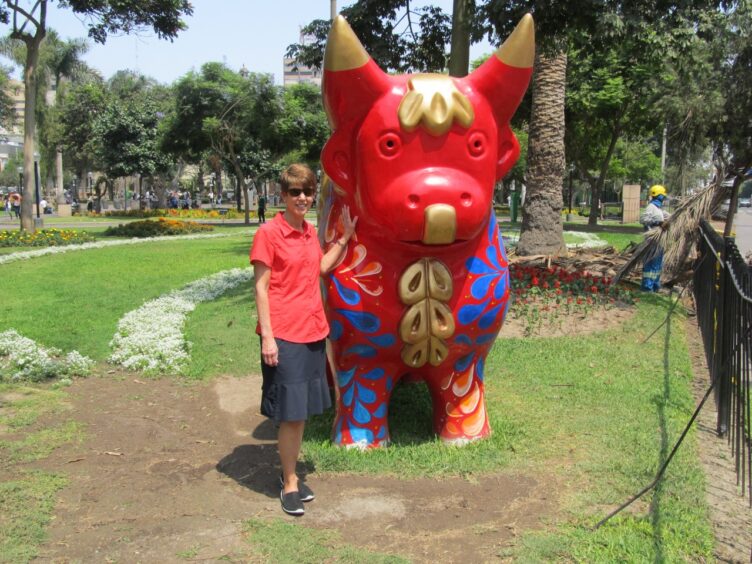
Barranco is a laid-back artsy part of Lima with a bohemian vibe. There’s lots of street art, crafts and shopping, as well as several historic sites. It faces a nice beach, which is great for strolling or surfing if the weather is fair. The main sights include the Plaza de Armas of Barranco, the Cathedral of Barranco, and Puente de los Suspiros (Bridge of Sighs). La Feria is the craft market where homemade clothing, crafts and food are sold on weekends. Previously used by fishers to reach their boats, the cobbled “Bajada de Banos” is a popular place to stroll from the Bridge of Sighs to the beach. Barranco is another good place to enjoy ceviche.
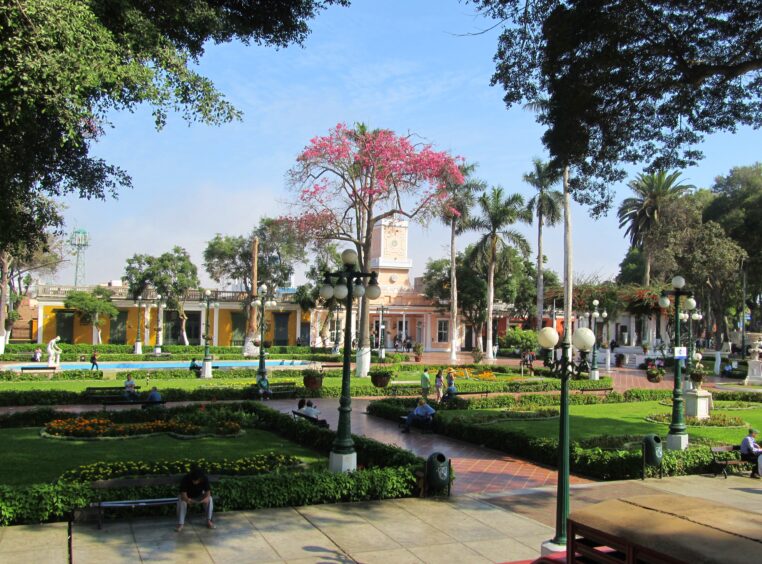
Barranco is a little further down the coast from Miraflores and there are several ways to enjoy it. If you’re staying in Miraflores and you want some exercise, you could walk from Miraflores to Barranco on the 6-mile Malecon boardwalk along the coast. Taxi and Uber are also good options. Get Your Guide offers a bicycle tour, food tour and other tours that include Barranco, while Viator offers a street art walking tour.
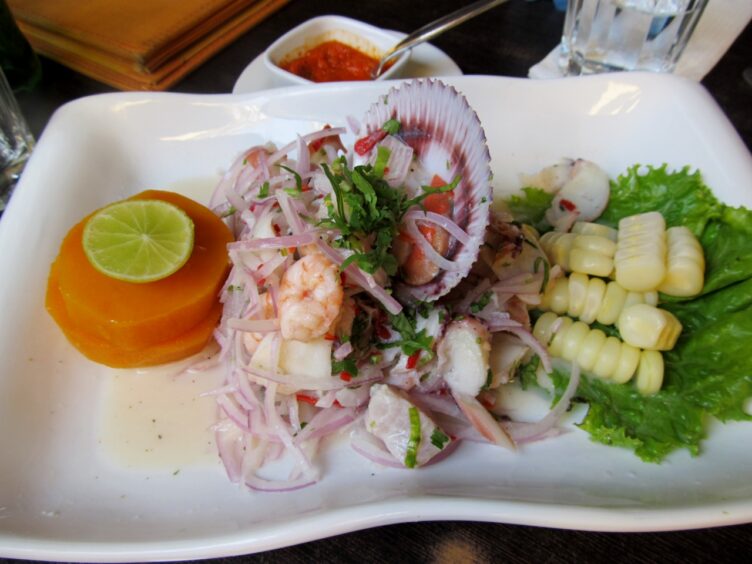
When you arrive at the Jorge Chavez International Airport in Lima, you can get local currency using ATMs. Fees vary and if you want to get the best rates, get a small amount at the airport and replenish in town where you’ll have more options.
I always use the Green Taxi kiosk, located just before the exit, to get a ride to my hotel. Pay in advance with a credit card for safe and reliable service.
Uber is not a licensed taxi service and is not permitted to serve the airport.
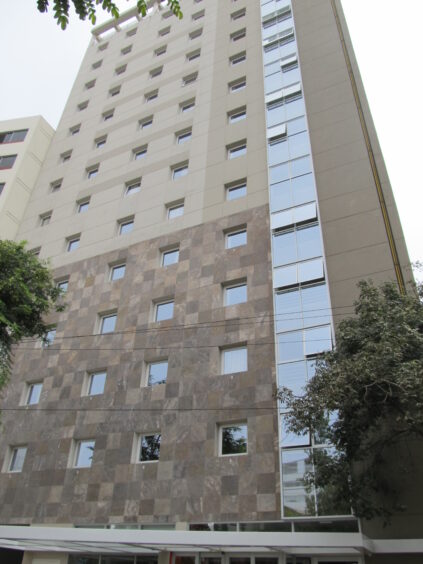
I usually stay in Miraflores, which is the most popular place for tourist lodging in Lima. There are many hotels and hostels at different price points, as well as restaurants, stores and parks. Barranco is another popular option, but it’s further from the airport and downtown. Downtown is dense and noisy, so it has never appealed to me to stay there. Here are hotels where I’ve stayed and can recommend.
Other chain hotels and budget hostels are sprinkled throughout Miraflores, many along the main street, Avenida Jose Larco.
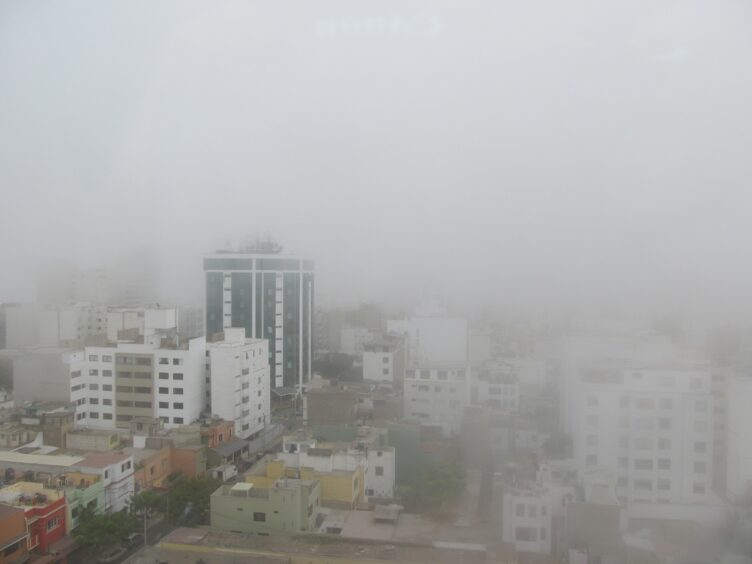
Peru has a wet and dry season, which varies by region. The wet season is during the North American winter, from December to March. The dry season occurs from May to October. In Lima, the dry season is also fog season, known as garua. From June to October, Lima is often drenched in thick, damp fog that casts a gray hue over the city. Temperatures are generally moderate, in the 60s F, so a light wrap is all that is needed.

In general, clothing is casual and comfortable, with business attire being common downtown. Jeans or khaki pants are fine. There is an active foodie scene and it’s appropriate to dress up a little at nice restaurants and bars. I usually wear some variation of black pants, black flats, and a nice top for dinner. Tourists dressed in expedition gear for their Amazon and Inca Trail excursions look a little out of place, but truly, no one cares. You can dress how you want.
During all my visits to Lima, I’ve always found new things to do and see. I recommend that people visiting for the first time allow three days in Lima, Peru, but it’s still worth it if you only have a day or two.